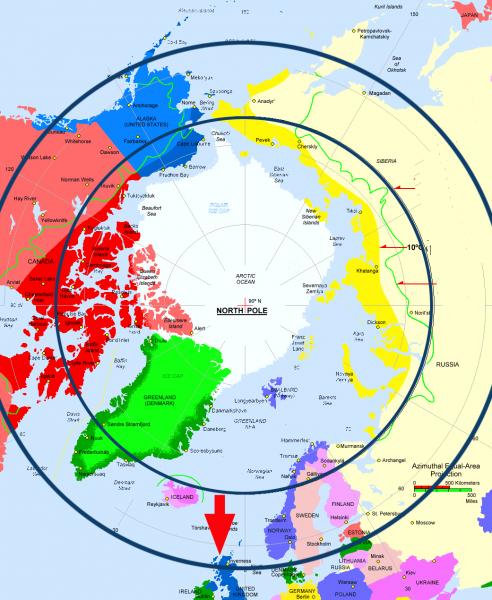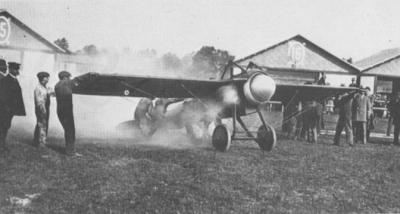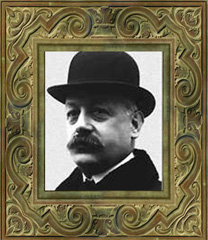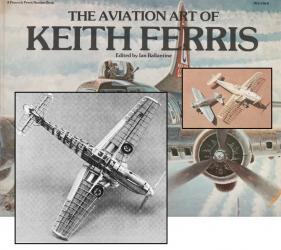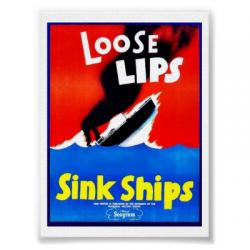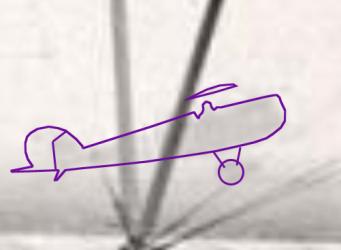-
Posts
2,637 -
Joined
-
Last visited
-
Days Won
1
Content Type
Profiles
Forums
Gallery
Downloads
Store
Everything posted by Hauksbee
-
Yeah...I...ah, expected something like that. (LOL) And, true enough, it does water down the experience a bit. But, being a QC flyer, I get the itch to fly in fifteen minute segments; then I'm off to do chores, or whatever. Thanks, Olham.
-
Since I've been flying Microsofts ETO Sim again, I've gotten used to the green targeting cone. I know this can be summoned up in OFF thru CFS3, but can't recall where to find it. Can somebody give me a clue? Thanks.
-
Pure music! When I visited Oslo last year, one of my pleasures was standing on a street corner imagining the sight of British Mosquitos, at less than building height, ripping up the street to pitch bombs into Gestapo headquarters. (regretably, the bombs turned out to be duds. Anyone know why?)
-

OT: For our friend HouseHobbit
Hauksbee replied to HumanDrone's topic in WOFF UE/PE - General Discussion
Somehow, I don't think this fellow is a real Hobbit. Absolutely none of the house appears to be underground, I see no round doors, and he's put a water wheel where there's no water. Of course, he may have built over in Bree,where there be many queer folk. -
That's a breath-taking view! I'd definitely want to add a seat belt to my chair.
-

OT: Returning To The Front
Hauksbee replied to CaptSopwith's topic in WOFF UE/PE - General Discussion
"Life-changing", you say...? -

Two beautiful new WOFF Screenshots
Hauksbee replied to Olham's topic in WOFF UE/PE - General Discussion
Thanks, Pol. I'll do that. -

Two beautiful new WOFF Screenshots
Hauksbee replied to Olham's topic in WOFF UE/PE - General Discussion
True. While we generally think of Europe as lying directly east, actually you're all a good bit to the north. This map (not the best, but I was hurrying) shows that if the Gulf Stream stopped, northern France, southern England, Belgium and Germany would have a climate akin to Newfoundland, northern Canada ans southern Alaska. -

Two beautiful new WOFF Screenshots
Hauksbee replied to Olham's topic in WOFF UE/PE - General Discussion
Now that you mention it, I recall people at the time remarked that the weather was unusually foul, and winters severe. But also, the compliments posted here indicated the Devs had really 'captured the look of northern Europe' (at present) ...which, if true, means that northern Europe looks a lot like San Francisco: mild summers with grey, overcast and drizzly winters. (although I only saw one snow flurry in S.F. in 30 years). The graph for Paris seems to indicate that precipitation (I'll assume that some of that blue line is snow in the winter) is fairly constant all year 'round. -

Two beautiful new WOFF Screenshots
Hauksbee replied to Olham's topic in WOFF UE/PE - General Discussion
Dreary, overcast, rainy...with the promise of more to come. I recall posts (on this Forum) by members in northern Europe also complimenting the Devs on the accurate portrayal of flying weather. I'm only a Quick Combat flyer, and I'm always surprised at the number of times I click "Go To The Field" and OFF launches me into a raging rain storm. I know England is famous for it, but do you guys on the mainland really get that much inclement weather? -

OT: This could be a joke, only it isn't
Hauksbee replied to Von Paulus's topic in WOFF UE/PE - General Discussion
Right on the money! -

OT: This could be a joke, only it isn't
Hauksbee replied to Von Paulus's topic in WOFF UE/PE - General Discussion
I'm coming to this late, but I think too much attention has been paid to whether or no these guys are actually spies. Let's assume the best intentions on all parties. Let's assume that the photographers really wanted nothing more than photo research for a realistic video game. Let's also assume that they were photograhing Area 51, which, in the U.S., is about as secret as it gets. First off, they will have photos that may well have info they shouldn't have. Then, when they build their "authentic" model for the video game, they will have presented the general layout of a base that should not be seen. What would Russia or China pay to see an "authentic" model of Area 51? $49.95? (please forgive my dated Cold War sensibilites) In matters of national security, the rules are the rules. Not always reasonable; often 'over the top', but you break them at your peril. If you're going to go to a foreign country and photograph something that's militarily sensitive, it's best to walk in through the front door, declare yourself and your intentions. If they say "No", pack it in. How much could it wreck your video game if the base was 'blue sky' imagined in L.A. and not absolutely authentic? -
You do have a knack for getting right in there at point blank range. Great series of clips.
-

The Unfortunate Death of M. Deperdussin...
Hauksbee replied to Hauksbee's topic in WOFF UE/PE - General Discussion
Sort of the Bernie Madoff of his day. Still, it paved the way for Louis Bleriot to buy the remains of the company and create the SPAD of WWI. -
The Unfortunate Death of Armand Deperdessin The following is (for the most part), word-for-word from "The Speed Seekers", 1974 The story of the SPAD-Deperdussin Racers had an improbable beginning in 1909 with a middle-aged silk merchant, originally from Lyon, who had come to Paris from a Brussels silk firm at the turn of the century and in the intervening years, with great charm and persuasiveness, amassed a fortune. Success only made him audacious and he expanded his interests into other enterprises, always on the look-out for novel promotional innovations. It occurred to him that to exhibit an aeroplane-in those days a distinct curiosity-at the Bon Marche' Store might help draw large crowds to his window displays. But how to get one? They were scarcely an off-the-shelf item. He visited engineer Louis Bechereau, then twenty-nine, at his small firm only recently co-founded with the nephew of Clement Ader, bearing the name Societe' de Construction d'Appareils Aeriens. For Bechereau, the visit of the flamboyant merchant brought a gust of heady excitement. Deperdussin wanted his airplane fast: the deadline was Christmas. This took some doing, but when Christmas arrived, the first of Deperdussin's fabulous racers was ensconced among the Christmas toys. Bechereau, who had acquired a lifelong interest in speed, and had a few novel ideas of his own, found the unlimited financial backing of Deperdussin a godsend. Their next plane was built at Bethany, near Rheims, where the firm had been re-organized in 1910 as Societe' pour le Appareils Deperdussin-or simply, SPAD. In 1912, at about the time Bechereau was perfecting a technically giant monocoque form of construction, a young engineering graduate name Andre' Herbemont was hired as Chief Carpenter. M. Deperdussin, meanwhile, had purchased the airfields at Etampes, Villacoublay and Rheims, and was busy as a benefactor to the classic Gordon Bennett aeroplane races. It was for these races that Bechereau, together with the Dutch designer Fritz Koolhoven, fashioned a series of speed planes destined to stand as the most important pre-war types. The man who translated Bechereau's ideas into beautiful hardware was Spad's long-time unsung shop foreman, a man named M.Papa. A Deperdussin produced by this team won handily in 1912 and M. Deperdussin was awarded the Legion d'honneur. The following year, Bechereau assigned young Herbemont his first major task: to design a set of smaller wings for the 1913 Deperdussin racer. But, the wings turned out so small that Becereau decided against using them. On a brisk, clear September morning, young Herbemont clocked the rival Ponnier monoplane which seemed to be faster than the Deperdussin. Suddenly alarmed, and acting on his own initiative, he quickly fitted the smaller set of wings to the F.1 racer. The result was an impressive victory, marking the first time in history that a person had exceeded two miles per minute. In addition, this climaxed a series of ten consecutive World's Speed Records that lifted the bar from 90.14, to 126.59 mph, set by Deperdussin. (1913) The flavor of triumph, however, had a sour taste. A few days previously, M. Deperdussin had been arrested on the shattering revelation of swindles involving 28,000,000 francs. (at the time over $6,000,000) The great Deperdussin racers had been financed with stolen money and 'le bon patron' received his Gordon Bennett victory congratulations in prison. It seems he had developed expensive tastes, and, in addition to funding competitions such as the Gordon Bennett Cup, he entertained lavishly. The trading arm of the Comptoir Industrial et Colonial Bank claimed that he funded this by fraudulently borrowing from them using forged receipts from his silk business as security. He remained incarcerated for four years until he was brought to trial in 1917. Although it was claimed that he used much of the money to develop France's aviation expertise, he was convicted and sentenced to five years in prison, but as a concession for first offenders he was reprieved ("sursis") and released immediately, but it ruined him completely. His company went into liquidation, his fortune turned to ashes, and on June 11, 1924, in a dingy hotel on the Rue St. Lazare in Paris, Armand Deperdussin shot himself.
-
Just think about you'd feel with live ammunition!
-
Terrific Albatros! That engine is so detailed that I was tempted to ask if it actually runs. It put me in mind of a book of paintings by Keith Ferris. In the opening pages, he talks about model making as an aid to painting. Shown here is a Me-109, all done in aluminum, (wingspan 14.75") and shown again with a Spartan Executive, (wingspan 9.75") also in aluminim. This latter was a commissioned model, though I don't know how he could bring himself to part with it.
-
I fully understand. I have never been good at math, and useless at any form of computer coding. (must be a right-brain, artist thing.) When I was in computer school, I recall a fellow student lamenting to the instructor, "My coding doesn't work". And the reply was, "It never does. The way to proceed is, (1) First you write the code, and then (2) you hammer on it for a few hours." I took his point to be that, for most of us in this world, coding is not intuitive, and everbody racks their brains over it. You're the only one.
-

to all italy addon testers
Hauksbee replied to stumpjumper's topic in WOFF UE/PE - General Discussion
-
Great exposition, BulletHead. This gets copied and filed for future reference.
-

Details from the Jastaschule Famars
Hauksbee replied to Olham's topic in WOFF UE/PE - General Discussion
That he did. In the early days of fighting sail, ships were often comandeered from the commercial fleets, captains, crews and all, and fitted out with whatever guns were available. These fleets pretty much just collided in a confused mass (mess?) and Admirals had little control in the smoke and mayhem. In time, govenments took over building warships and the two-column formation (us and them) became the agreed upon way to fight a battle since it was the best way to bring the most guns to bear, and accurately, and commanders could exert the maximum amount of control. After a century, or so , of that, Nelson essentially returns to the older, melee' attack and just dives through the enemy line cutting off the first third of the Spanish-French fleet (where a heavy percentage of the heaviest-gunned ships were) leaving it nothing to do but "wear around" and try to get back to the fight. This takes a long time. In the meantime, Nelson's ships had 'crossed the T' and were pouring 'raking fire' into the enemy. Raking fire is when a cannon ball travels the whole length of the ship, bow to stern. In the days of fighting sail, this was devastating. This also had the effect of putting a brick wall in the path of the Spanish-French, and each ship had to 'spike the brakes'. Now they're piling up behind each other. Nelson's second great stroke of genuis was that after he had given his orders to his captains, he encouraged them to question him about how and why. One of the hot-button topics of the day was, "What if, in the smoke of battle, I can't see your signal flags" and "What if I am suddenly presented with a perfect target, what do I do?" People had been court martialed and shot for not being where they should have been, or, at the least, cashiered from the service. Nelson's reply was "No captain can do very wrong if he puts his ship alongside that of an enemy" Now Nelson's Young Turks could use their iniative. And use it they did. As the two fleets converged, the Spanish-French had Nelson out-gunned. By the time the lead ships were turned around and could have headed back into the fight, the rest of their fleet had been so trashed that now Nelson had the upper hand. They broke off and called it a day. -
Hang in there, hoss. You'll make it. And don't worry if you can't keep it all straight in your mind at once. When I went through computer school,I was massively confused in every course until the half-way point, and then things seemed to fall together and make sense. I recall being told that in the early days of computer chip making, they discovered that 80% of the commands sent to the CPU used only 20% of the chip's abilities. I find the same for lots of programs; for example, Photoshop. 80% of what I do uses about 20% of Photoshop. If I need the rest, I'll get my copy of "Photoshop for Dummies" and figure it out. For relaxation, try Vaugh Williams "Variation on a Theme by Thomas Teller and/or "Variations on Greensleeves". Or most any chamber music quartet from the classical era, i.e., Bach, Haydn or Scarletti. Great stuff. It'll mellow you right out. Or, AC/DC cranked up 'til the glass in the windows blows out.
-
I realized that after I posted it. It's the Lloyd FJ, the bottom illustration in my first post. I did think it was the pilot's position, though. the Schwarzlose: So not only were they tap-dancing around the variable propeller speed, the gun's rate of fire varied too? It sounds like an invitation to blow your own prop off. How did they deal with it back in the day? Was this a common problem, or no?


